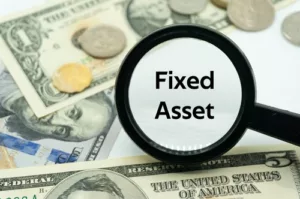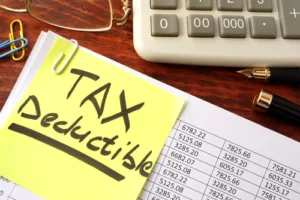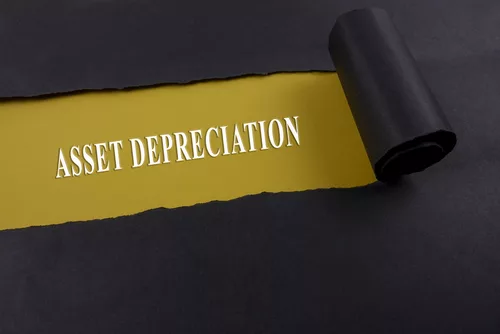- Posted on
- Kortney Murray
- 0
As time goes by, equipment breaks down. Furniture wears out. Computers get overrun with viruses and malfunction. Office equipment degrades. All of these valuable business assets start to lose their value and will eventually need to be replaced.
But how is this loss of value recorded within the business, and why is it so important? In this article, we will discuss the depreciation of fixed assets and the importance of depreciation in business accounting.

What is the Depreciation of Fixed Assets?
In previous posts, we’ve discussed fixed assets. In short, fixed assets are the tangible items a business purchases for long-term use in generating revenue. These items cannot easily be converted to cash, such as equipment, machinery, land, vehicles, furniture, etc.
Fixed assets are tangible things you can touch, which means they are subject to wear and tear, excessive use or misuse, or accidents. As a result, their value decreases over time. And to keep track of this loss of value, depreciation is used (while intangible assets will go through the process of amortization instead).
Depreciation of fixed assets is an accounting method of revaluing the assets incrementally until they reach the end of their useful life or no longer provide value. Useful life is the length of time a business estimates the asset will be productive. The span of the useful life is the number of years depreciation will be calculated. Once that period is over, the item can be either salvaged, recycled, or disposed of.
The amount the asset can be sold for at the end of its useful life is called salvage value. To figure out an item’s overall depreciation is calculated, simply subtract salvage value from the original purchase of the asset. Like so:
Original purchase cost – salvage value = overall depreciation
KEEPING TRACK OF DEPRECIATION
It is the accountant’s job to keep track of asset expenses and record depreciation on the books. But since there is probably a multitude of assets within your business, it can be beneficial to have an asset management system to keep track of all of them.
Many businesses use an asset tracking tool for depreciation accounting. These tools can help them monitor, track, input asset lifecycle data, plan maintenance, and schedule repairs. And if you have a mobile system that can be accessed by all employees, this ensures all real-time data is shared immediately from any location.
Each fixed asset should have a depreciation schedule. This data can be collected in a spreadsheet of your own or through a template. Then, during the end of the accounting period, you can transform the data into charts and graphs for easier readability.
Each depreciation schedule should include the following:
- Asset description
- Date of purchase
- Purchase price
- Estimated useful life
- The method of depreciation used
- Salvage value
- The current year’s depreciation amount to be deducted
- The total depreciation amount till now
- The present-day net book value of the asset
WHEN TO DEPRECIATE FIXED ASSETS
Not all tangible assets are depreciated, however. The assets that are relatively inexpensive or are not used in the business for a year and more will not be worth depreciating. Keeping track of depreciated assets takes time and money.
Therefore, there is no use in calculating such insignificant depreciation. Additionally, some items may be partly depreciated, such as equipment or vehicles that are used both for personal and business use.
HOW TO DEPRECIATE FIXED ASSETS
To depreciate your fixed assets, you will need to choose a depreciation method that suits your business needs the most. In “What is Asset Depreciation and How Does it Work?”, we discussed some of the varying ways to calculate asset depreciation. Here is a quick review of the most common types of depreciation methods:
- Straight-line method: This is the most common depreciation method in which the value of the asset will be split evenly throughout its useful life. Straight-line depreciation can provide the most benefit to small businesses.
- Declining balance/accelerated method: With this method, you can write off a larger portion of the asset’s cost in the earlier years of useful life and a smaller portion in later years. Typically companies will employ the double-declining balance method that uses a depreciation factor of 2.
- Units of production method: You can also depreciate equipment based on how much work it does, which can be quantified by the amount of whatever the equipment creates or the amount of time it is working. Units of production depreciation will be taken more in the years the equipment is more frequently used, and less depreciation taken when it is not used.
- Sum-of-the-years’-digits method: Like the declining balance method, this method allocates more of the original cost to the earlier years. However, the sum-of-the-year’s-digits method uses a more even distribution, allowing the allocation of a set dollar amount of an asset each year throughout its useful life.
- Modified accelerated cost recovery system (MACRS): This is the primary depreciation method used for tax purposes, but can also be used for your bookkeeping and financial statements. With MACRS, assets are labeled under specific asset classes which will determine the useful life of the asset.
DEPRECIATION JOURNAL ENTRY
Accountants calculate depreciation every accounting period so the asset’s cost can be moved from the balance sheets to income statements. These journal entries will result:
- A debit to depreciation expense: This is recorded in the income statement as an expense or debit, reducing net income. Depreciation expense will be a tax depreciation deduction for the asset’s cost, which will reduce income tax. Business expenses of these types are recorded as debits on your taxes rather than credits. To claim depreciation expense on your tax return, you will need to file Form 4562 along with your taxes.
- A credit to accumulated depreciation: This is recorded in a contra-asset account, reducing the value of fixed assets. Accumulated depreciation is the amount that is subtracted from the asset’s value. This will be a credit rather than a debit because the asset is losing value.
Why is Fixed Asset Depreciation Important?
This may seem like a lot of work. You may ask if it is worth it to calculate depreciation for fixed assets. The answer: yes. And here are a few reasons why…
HELPS GIVE AN ACCURATE DEPICTION OF VALUE
When you depreciate each fixed asset, you are essentially finding the most accurate estimation of its current valuation. Instead of reporting the original cost you paid ten years ago, you are reporting what it is worth today; its net book value.
It is not worth what it was worth ten years ago due to the inevitable wear and tear it has accrued. Therefore the original price is no longer accurate. To find an asset’s net book value, subtract its accumulated depreciation expense from its original cost. Like so:
Accumulated depreciation expense – original asset cost = asset’s current net book value
Once you find the net book value of all your current fixed assets, you will have the most accurate depiction of the true value of an asset.
ALLOWS BUSINESSES TO MAKE INFORMED DECISIONS
If you do not depreciate your fixed assets, you will likely overstate or understate your total asset expenses. This can lead to budget issues overspending or underspending on assets you may or may not need. Once you know your actual current fixed asset value, you can make more informed business decisions.
Take a look at each item’s accumulated expense, and then look to see how much revenue the item helps bring in. You can ask yourself if it is a truly necessary asset based on this information. If it is, you will continue to make sure it is running at full capacity through planned maintenance schedules.
If it is not a necessary asset, you might consider disposing of it and finding a replacement at your earliest convenience. Perform regular audits on your fixed assets for the most accurate data reports. When business owners have all the up-to-date information, it provides a clear snapshot of their true business profits.

PROVIDES TAX BENEFITS
The loss of value in a fixed asset is tax deductible. The depreciation cost each item has accrued can be used to lower your business’s income tax. That means you benefit by decreasing your tax liability! To ensure you have all the necessary documents for tax reporting (as well as for accounting purposes), make sure to keep all of your receipts and invoices.
This will prove the purchase amount of each asset in case of any IRS audits. It also can be used as proof of any state sales tax payment you’ve made on the purchase. Once you’ve got all your necessary documents in order, you can calculate the accrued depreciation on all your fixed assets to write the depreciation expense off on your taxes.
Make sure you are benefiting from these extra incentives on your taxes if you are eligible:
- Section 179: Internal Revenue Code (IRC) Section 179 allows businesses to deduct a percentage of the cost of certain assets and property that they’ve bought. It is possible to expense the entire purchase price of equipment and computer software placed in service during that tax year. However, the purchase must meet the eligibility requirements.
- Bonus depreciation: Bonus depreciation allows businesses to depreciate 100% of the cost of qualifying business assets in the purchase year. Unlike Section 179, you can get a bonus depreciation whether or not your business is profitable.
Make sure to talk to your accountant about what you qualify for. You could save a lot of money through these tax benefits if you are making big asset purchases this year!
BIG PURCHASES WON’T TAKE A BIG HIT ON INCOME
The IRS stipulates that businesses must spread fixed asset costs out over time. So instead of deducting the purchase immediately from your income the year you get it, you can spread it out. This gives you time to recover the cost of an asset without having to make any big changes in your budget.
You will be deducting the expense through depreciation throughout its useful lifespan, making your business finances breathe a sigh of relief. This is due to the matching principle, a basic principle of accrual accounting.
The matching principle states that companies must record expenses in the same accounting period as the revenues they are related to. The purpose is to maintain consistency across the company’s income statements and balance sheets.
Because the revenues the fixed asset will generate will span across several accounting periods, this means that the expense should not only be recorded in the year it was purchased. Let’s take an example. If you bought a tow truck for your business that you expect will last seven years, you would write off its cost over those seven years of its estimated useful life.
If you don’t, that means you will absorb the full cost in the first year, which would greatly understate your net income that year. Additionally, the following years’ net income would be overstated. Spreading the expense over time will allow you more time to replace the aging asset.
Since you will not have to recover from the original year’s purchase hit to your cash flow, you should have plenty of time to stabilize your finances for the next big purchase.
SHOOT FOR CONSISTENT FINANCIAL STATEMENTS
Monitoring your fixed assets and recording their depreciation over time is essential to the operations of your business. In this article, you’ve learned the importance of depreciation. The depreciation of fixed assets helps give a more accurate depiction of their value, which allows you to make more informed business decisions.
Additionally, depreciation provides some tax benefits. And when you correctly expense the assets throughout their useful life, you will not suffer from misleading income statements that upset the balance of your finances.
Having steady, consistent financial statements makes it easier to get a loan when you need it. That’s when Coastal Kapital can step in and help you with all of your remaining financial needs.
If You Like Please Share It: